Direct CAD Generative Models
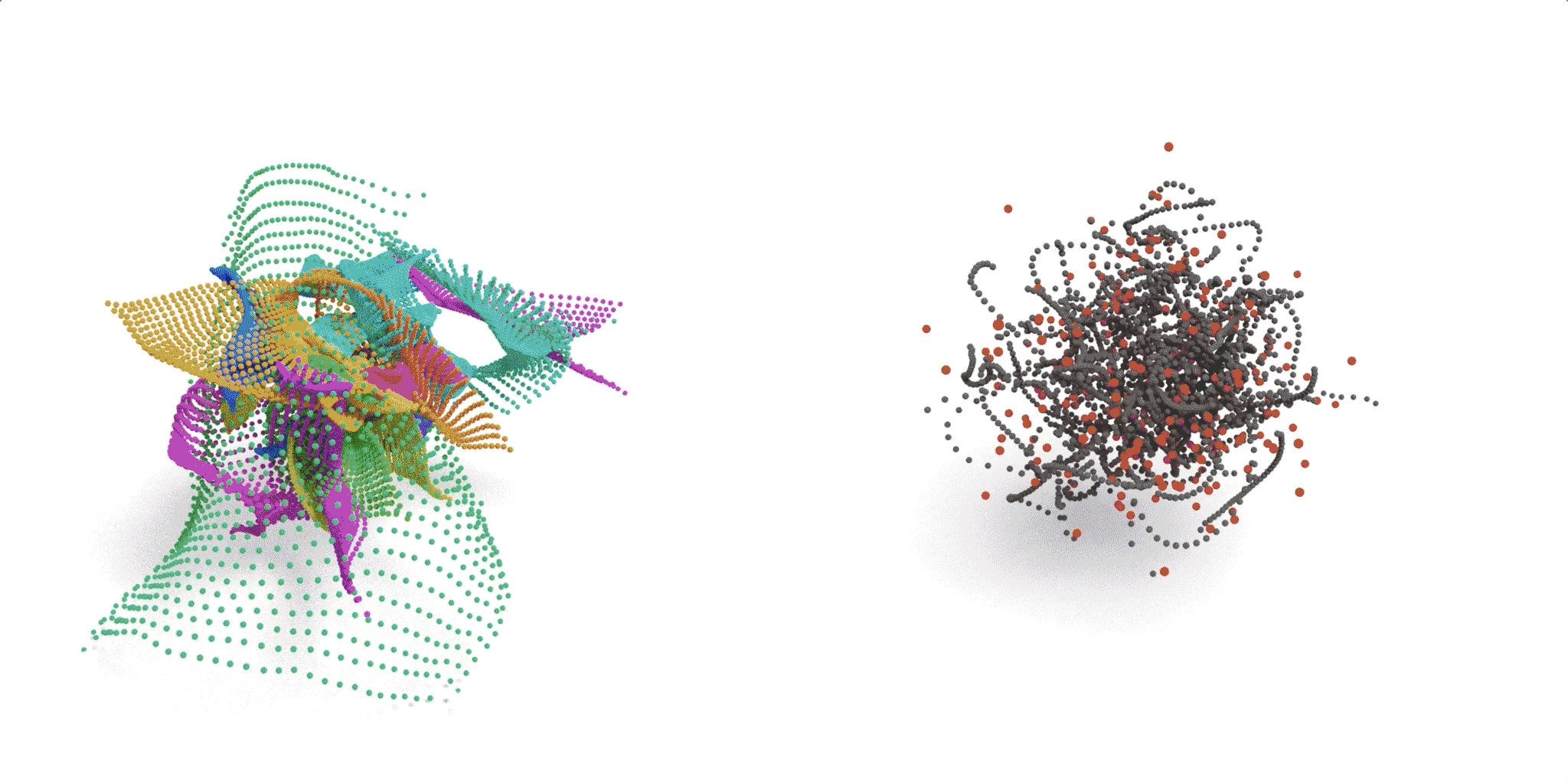
One approach to CAD generative models is sequence-based approaches, which mimic parametric CAD modeling operations to generate structured, history-based geometry. These models work well for prismatic parts with clean modeling feature logic. However, many design workflows rely on direct modeling, where geometry is edited freely, without a fixed modeling history. Direct modeling is common when working with freeform surfaces, organic shapes, or imported geometry where parametric features are absent. Sequence-based methods often struggle here, limited by the operations they’re built to emulate.
Together with collaborators at Simon Fraser University, we developed a pair of generative models that directly synthesize the geometry of CAD models in the boundary representation (B-rep), the native format in most CAD systems:
- SolidGen, an autoregressive model that constructs B-reps element-by-element, predicting the geometry and topology of vertices, edges, and faces in sequence.
- BrepGen, a diffusion-based model that generates B-reps from a structured latent tree, enabling the creation of complex and freeform solids.
SolidGen: Autoregressive B-rep Generation
SolidGen was the first generative model to directly generate boundary representation (B-rep) CAD models. B-reps define solid geometry using a combination of topological elements, vertices, edges, wires, and faces, together with associated geometric primitives, such as lines, arcs, and circle curves, and surfaces such as planes, cylinders, and spheres.
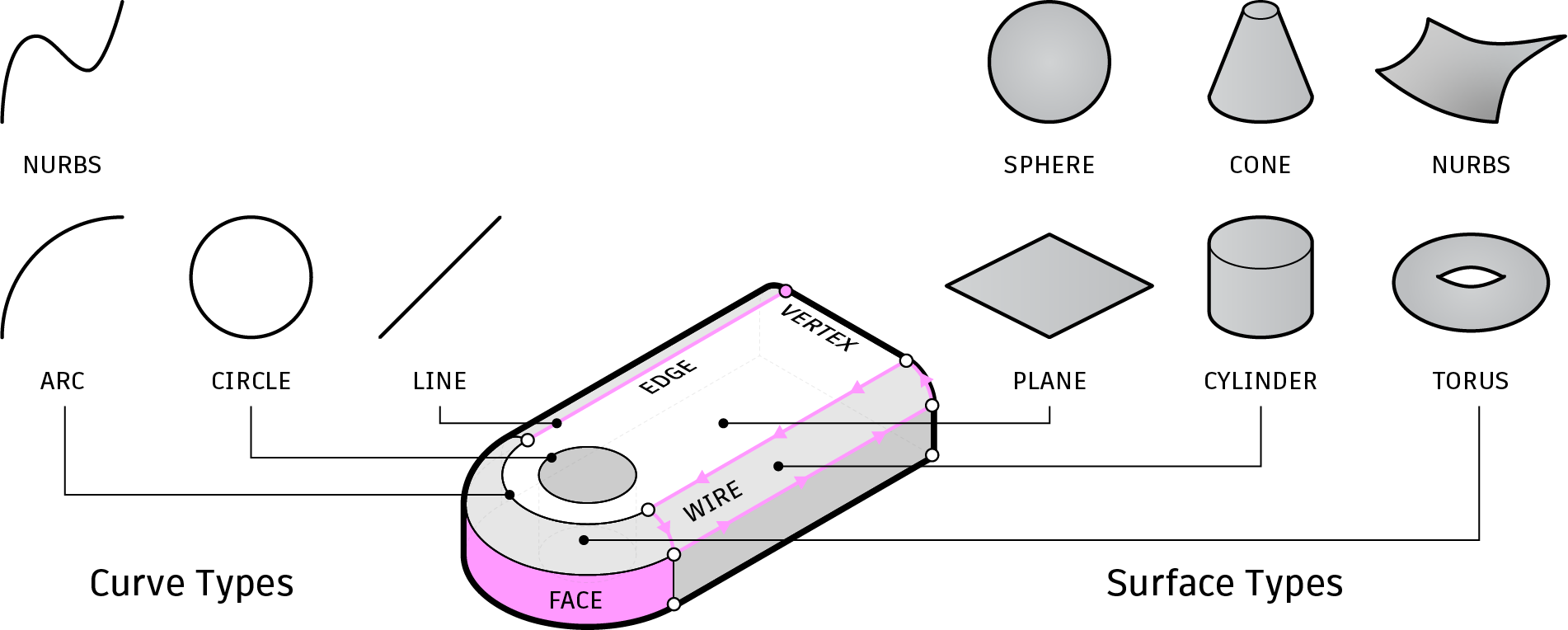
SolidGen constructs B-rep geometry sequentially, predicting one topological element at a time—starting from vertices, then edges, and finally faces. Each element is built with full awareness of the ones that came before, allowing the model to maintain a coherent, watertight structure throughout the generation process.

At the heart of SolidGen is the Indexed B-rep representation. This framework encodes the hierarchical structure of a B-rep solid and explicitly tracks references between elements. As shown above, a face references a loop of edges, which in turn references vertices. This indexed structure is crucial for modeling valid B-reps and enables the model to "point back" to previously generated entities using a pointer network.
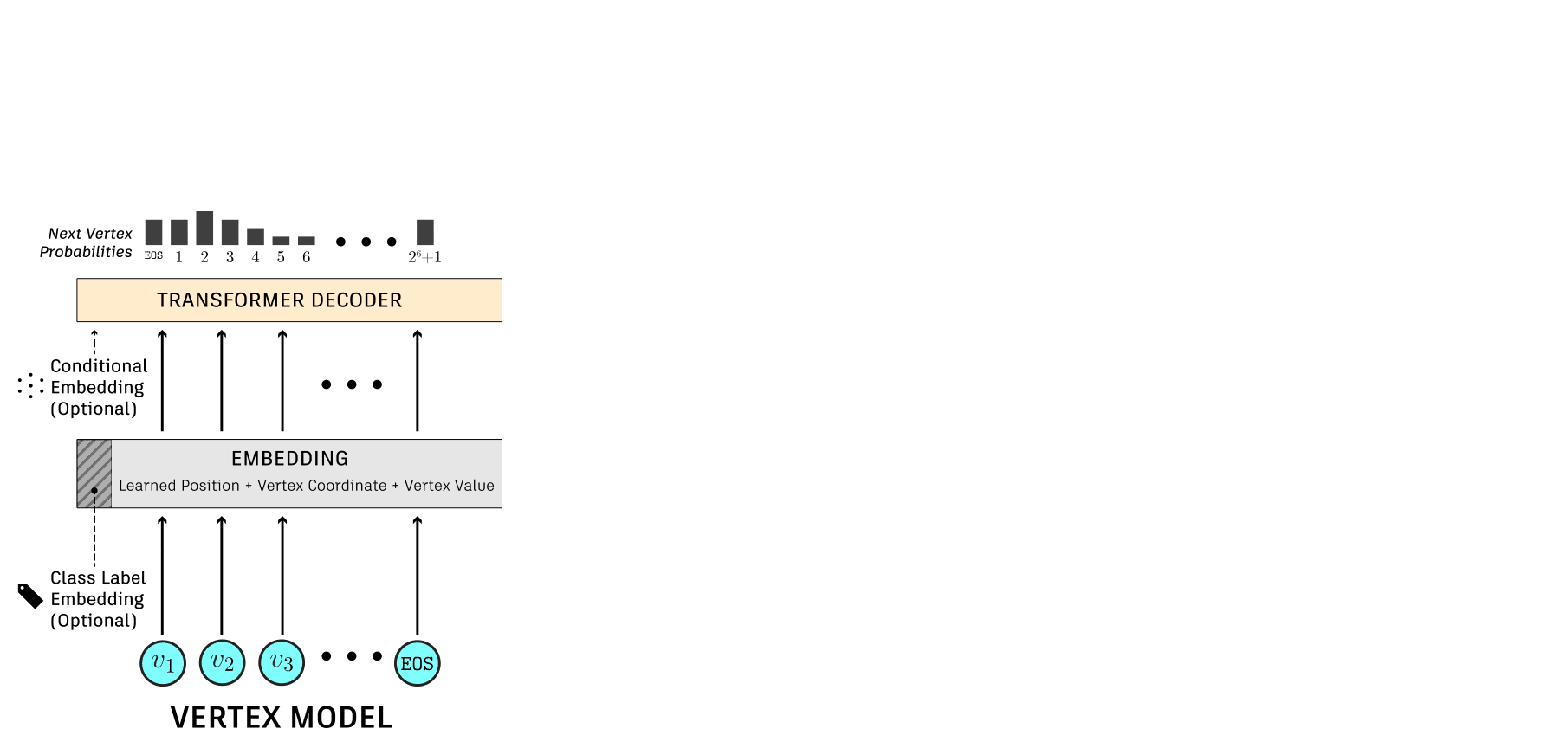
The SolidGen architecture (shown above) is based on Transformers and two-level pointer networks for the direct synthesis of B-reps without supervision from a sequence of CAD modeling operations. The architecture enables the generation of vertices, edges, and faces, allowing us to build the complete B-rep topology.
The animation above shows the step-by-step process of B-rep generation in SolidGen: edges are generated that reference vertices then faces are formed from loops of edges. As each element is generated, it is integrated into the growing structure, building up a complete and coherent B-rep solid. This highlights how SolidGen learns to construct geometry and topology together, enabling the direct synthesis of editable CAD models.
BrepGen: Structured Latent Geometry with Diffusion
BrepGen takes a diffusion-based approach that produces B-reps with higher fidelity and more flexible structure. Rather than generating geometry element-by-element in a strict sequence, as SolidGen does, BrepGen operates on a structured latent geometry representation that encodes each B-rep as a hierarchical tree (shown in the figure below). The root node represents the solid, with child nodes for faces, edges, and vertices, each encoding geometric features from sampled UV points. Shared topology is captured through node duplication, allowing the model to implicitly learn mating and adjacency relationships.

Using a transformer-based denoising diffusion model, BrepGen reconstructs the solid from root to leaves, first generating global structure, then refining local geometry. After generation, duplicated nodes are merged to recover connectivity, trimming faces from closed edge loops and assembling a complete, watertight B-rep. This approach enables the generation of more intricate surfaces and topologies, including curved, doubly-connected, and freeform geometry that’s difficult to express through sequential modeling alone.
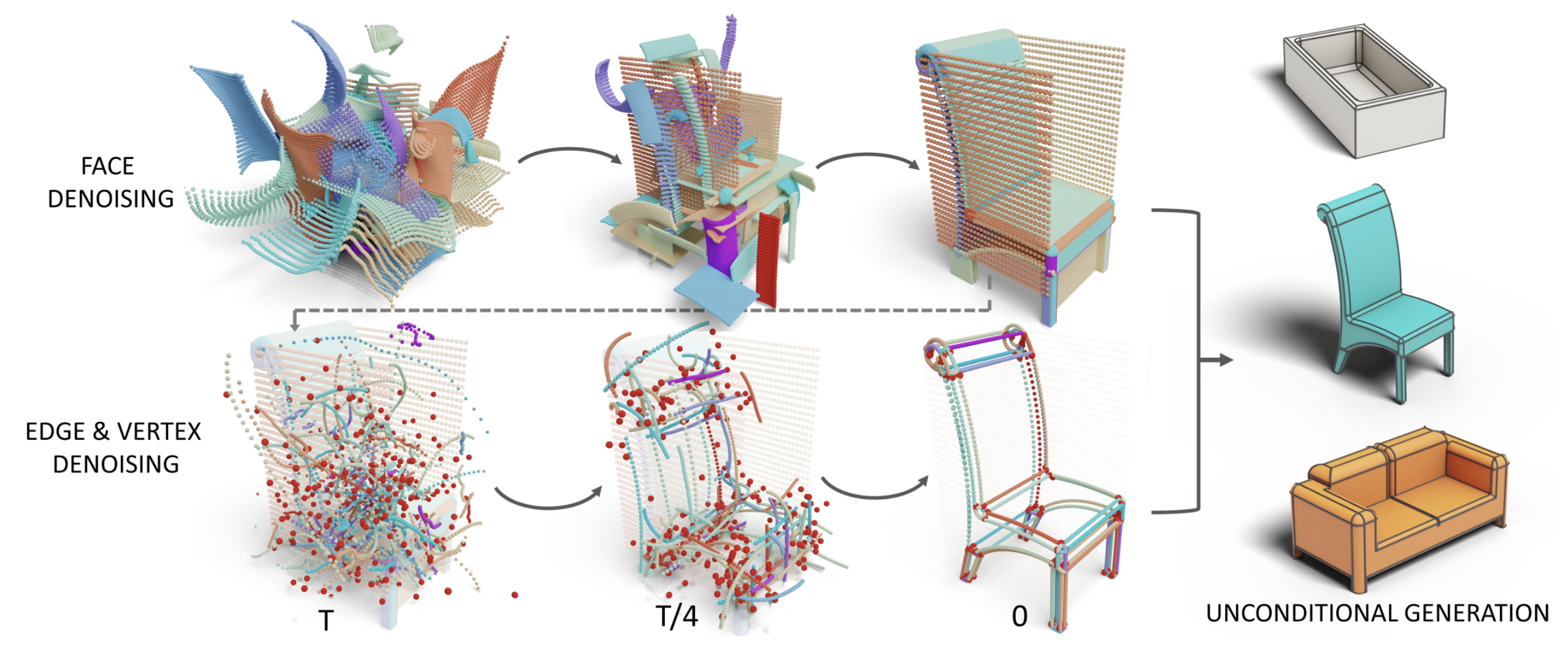
The animation below illustrates the denoising diffusion process in 3D. On the left, surface geometry is progressively refined from noisy samples into clean UV grid patterns representing surfaces. On the right, vertex and edge positions emerge from coarse, disordered points into structured topological elements.
We found that BrepGen produces geometry with improved structural complexity and visual fidelity compared to SolidGen. In the figure below, you can see that BrepGen generates more diverse and expressive shapes with fewer open boundaries and self-intersecting edges.
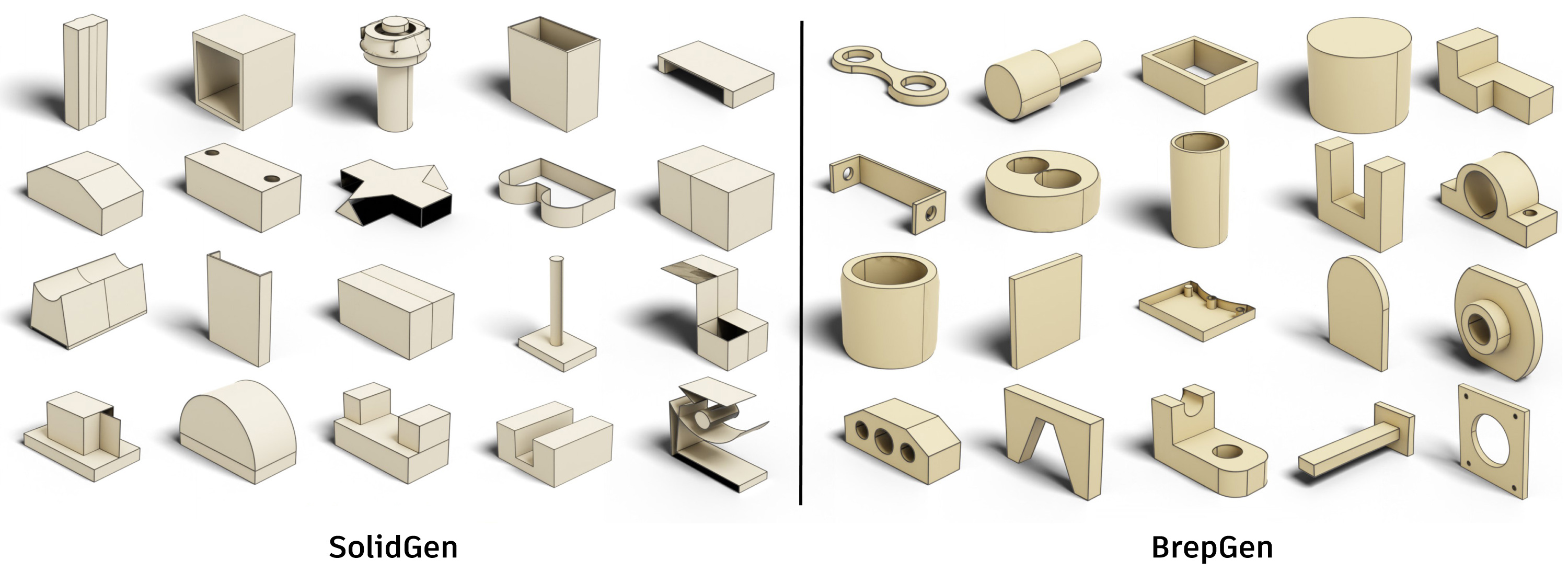
BrepGen performs well across a range of tasks, from generating novel shapes to completing partial geometry such as in the figure below. The grey geometry on the left is the input to the model, and the blue geometry shows completions on each row.
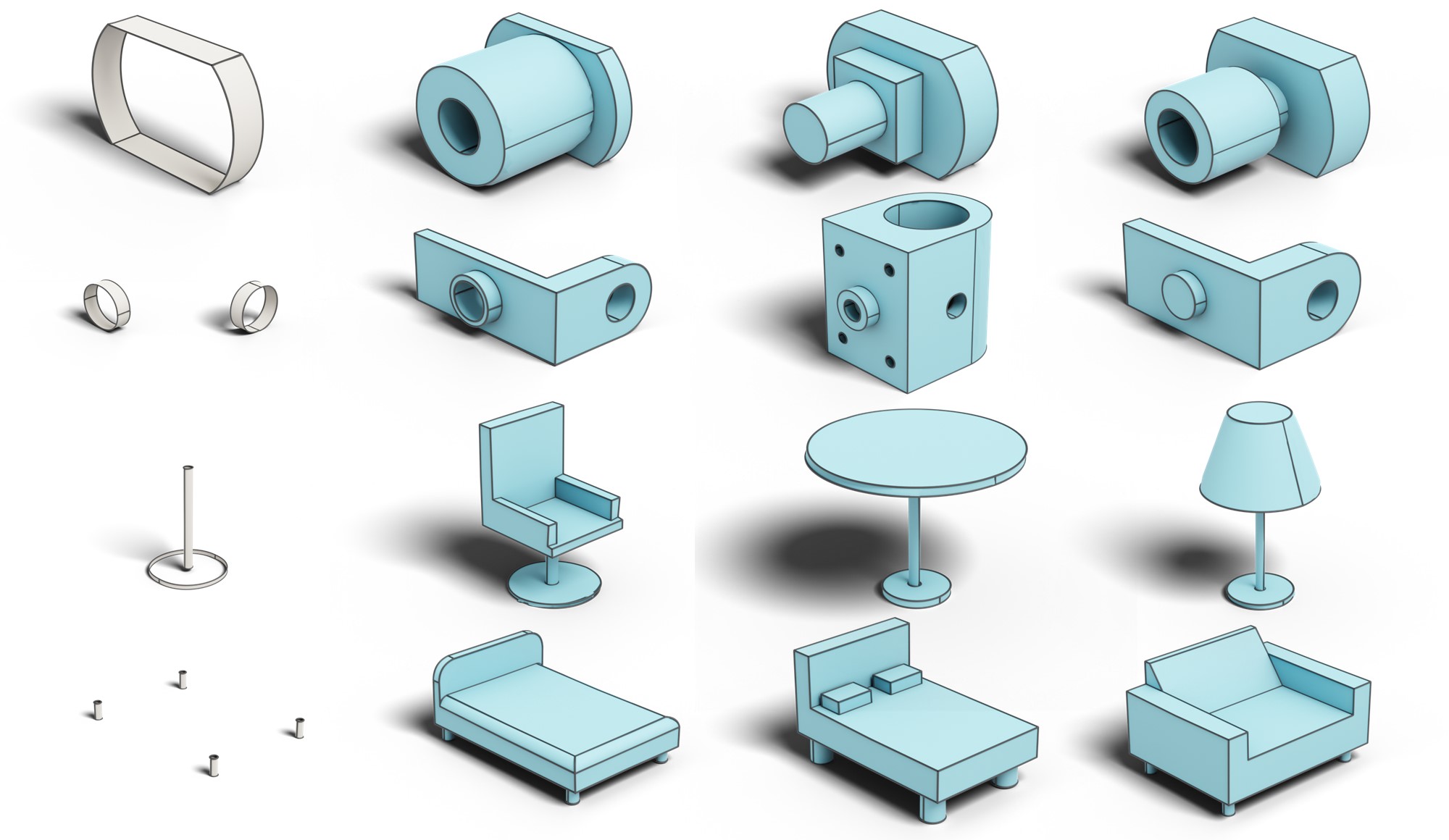
BrepGen significantly improves over prior models in both geometric diversity and B-rep validity, generating more expressive and topologically varied solids. Because it operates directly within structured B-rep space, its outputs are immediately compatible with modern CAD pipelines, an enabler for real-world design, editing, and downstream applications.
Toward General-Purpose CAD Generation
SolidGen and BrepGen represent a step toward more capable and flexible generative models for CAD, models that move beyond legacy parametric modeling sequences to generate geometry directly in the native B-rep format. This shift makes it possible to support a wider range of design workflows, including direct modeling and freeform geometry, while producing outputs that are immediately usable in real-world CAD systems. By learning to generate both geometry and topology together, these models open new directions for intelligent design tools that can suggest, complete, and synthesize complex 3D forms. As generative modeling continues to advance, we see direct B-rep generation as a foundational capability for the next generation of ML-assisted CAD tools.
SolidGen Paper: SolidGen: An Autoregressive Model for Direct B-rep Synthesis (TMLR 2022)
BrepGen Paper: BrepGen: A B-Rep Generative Diffusion Model with Structured Latent Geometry (SIGGRAPH 2024)
BrepGen Code: https://github.com/samxuxiang/BrepGen
Created By: Autodesk Research / SFU
Co-Authors: Pradeep Kumar Jayaraman (SolidGen lead author), Xiang Xu (BrepGen lead author), Joe Lambourne, Zhengqing Wang, Nishkrit Desai, Aditya Sanghi, Nigel Morris, Yasutaka Furukawa